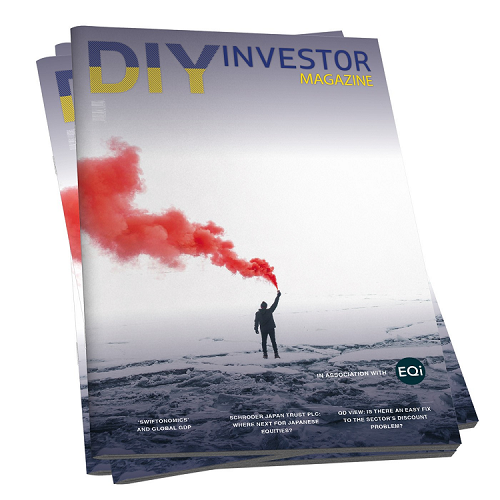Apr
2024
Money Basics: Spender to Saver > Saver to Investor
DIY Investor
4 April 2024
How do you transition from living from month to month, bill to bill, to managing to put some money aside, and then to setting it work for you as an investor? – guest post from across the Pond by Hannah Barnaby
To transition from wasting huge amounts of money servicing payday loans or credit card debt to reaping the benefits of the ‘miracle’ of compound interest may seem hopelessly divorced, but with some determination and commitment it is possible to take control and achieve better financial outcomes; first to consider that there is a difference between saving and investing.
There’s a continuum with spenders on one end, savers in the middle, and investors on the other end; your position on that spectrum may not be constant – if the pursuit of delayed gratification is making things feel just a little too austere, treat yourself to a blow out by all means; but then get back on the horse and realise how far that splurge has pushed back the achievement of whatever goals you have set yourself.
‘doing little and often is rarely worse than doing nothing and ever’
Some that subscribe to the FIRE movement (Financially Independent, Retired Early) may take frugality in pursuit of their objective to an extreme that may not be palatable to all; others may make a more modest commitment, but doing little and often is rarely worse than doing nothing and ever – the name of this site should give it away – ‘mony a mickle maks a muckle’.
Many small things over time combine to create a larger thing; Savings and Investment 101.
We all know that living from pay day to pay day is no fun – it is stressful, money is scarce and a broken boiler or blown muffler can soon see all things financial in a tail-spin.
‘a broken boiler or blown muffler can soon see all things financial in a tail-spin’
Ever received a letter from your mobile phone or broadband provider informing you that as a valued customer they are reducing your tariff? Don’t hold your breath.
So, it’s time to grasp the nettle, and this site is packed with practical tips and suggestions as to how you may embark on that journey from spending to investing – including the real life experiences of those that have been there and done it – with varying degrees of success.
There’s no right way, there’s wrong way; there will be a way that best aligns with your individual life goals, your personal circumstances, and your level of engagement.
A good first step is to get out of the scarcity mindset; you can only start from where you are and you can only influence what you can influence – a pay rise can deliver instant gratification, or accelerate your financial progress according to your mindset.
A good first move is to get to the saving step and start saving; start small and then keep stepping it up; if you don’t get a kick from seeing the value of your savings, and then investments increase, then this whole shebang may not be for you.
However, look beyond the financial services flannel, and start thinking about financial goals that would materially improve your lot if you were able to achieve them; consider how much effort you would expend in their pursuit, and how many privations you would be prepared to endure.
If you keep thinking that by getting a bigger paycheck all is solved, you may be missing the point.
More Money Isn’t the Answer
The problem is people tend to keep expanding spending to the chequebook – or worse, their credit cards; recognize you need to make do with what there is now – not what you wish there was.
Here’s a great article by Carolyn T Geer: Spender, Saver, Investor: It’s a Process that walks through the basics. She talks about budgeting – a process that tends to forget the purpose of the exercise.
The top down budgeting approach is supported by the budgeting philosophy described in the book All Your Worth: The Ultimate Lifetime Money Plan. It is much easier to manage your money when you have a broader perspective on how to relate to money.
‘Only through investing may you hope to accumulate enough to sustain your Standard of Individual Living when you can’t, or don’t, work anymore’
The purpose of what you want to get done in simple terms – move from spending everything to saving a little bit, and then a little bit more – only in this manner may you begin to get your Standard of Individual Living to where you might be able to sustain it with the money you’ve invested.
Once you are used to saving, then the next step is to invest. Only through investing may you hope to accumulate enough to sustain your Standard of Individual Living when you can’t, or don’t, work anymore (all known as retirement – hopefully planned, however often unplanned – EBRI consistently sees this in their retirement surveys).
Moral of the story: Get in the habit of saving. If you’re saving, get into the habit of investing. Make both automatic.
Make a commitment to yourself. Remind yourself of what, and more importantly why, you want to do this.
Your goal is to sustain YOUR standard of individual living – not someone else’s.

Leave a Reply
You must be logged in to post a comment.